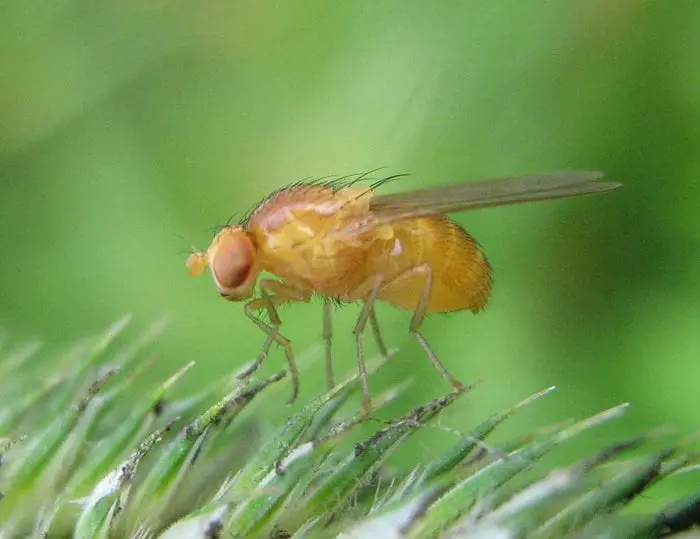Part 1
“Even if Darwinism is false above the microevolutionary level, it is nevertheless the only scientific theory of cladogenesis now available; and that is more important than the question of truth or falsity.” –Thomas Henry Huxley, quote from pg. 73, “Darwin’s Creation Myth” by Alexander Mebane
Until the time of Charles Darwin and the publication of “The Origin of Species by Means of Natural Selection or the Preservation of Favored Races in the Struggle for Life,” scientific investigation had been essentially a Christian endeavor, conducted mainly by Christians within the context of a larger Judeo-Christian civilization. The heartbeat of scientific investigation had been the desire to know and understand the nature of God’s created order. Truth and facts were all-important. Secularists often distort this history. For example, the famous confrontation between Galileo and the Roman Catholic Church is routinely portrayed by the propagandists of secularism as a debate between Christianity and secularism–whereas the reality is Galileo was a Christian with a better understanding of the Bible and nature disputing with other Christians with a lesser understanding of the Bible and of nature. Galileo contended that heliocentrism was consistent with the Bible. The only real question in the matter of Galileo is which Christian perspective was the truer one. Secularism was entirely irrelevant to the dispute. Examples of such distortion by secularists can be multiplied ad infinitum.
With the advent of Darwin’s assertion of natural evolution as the source of living species, and the highjacking of scientific pursuits by the priests of the religion of Secular Humanism, something was introduced into scientific investigation which had not existed previously: falsification. Make that deliberate falsification. (I am using the term “falsification” here to denote either outright fabrication of evidence or misleading interpretation of the evidence.) In addition to his scientific legerdemain, Darwin also tried to take credit as the originator of the theory, which was far from the truth.
Many people naively assume that falsification among evolutionists has occurred only in isolated examples such as the Piltdown Man hoax (which was promulgated as fact in school textbooks for 50 years), or Ernst Haeckel’s phony embryo depictions (which are, to this day, being utilized in some school textbooks) or the Midwife Toad hoax, or the Nebraska Man hoax. The simple fact of the matter is, nearly the entire cadre of secular evolutionists, animated by their faith in the religion of Secular Humanism, have strenuously endeavored to keep the general public in ignorance of the significance of the facts of paleontology, geology, biology and biochemistry pretty much right from the beginning, starting with Darwin himself. Deliberate misrepresentation of the evidence by evolutionary scientists goes far, far deeper than crude manufacturing of evidence such as Piltdown Man. It involves their handling of, and explication of, the facts of paleontology, geology, biochemistry, and genetics to the general public, and their pervasive repression of any contrary evidence (see, for example, Jerry Bergman’s book, “The Criterion” and this video by Mike Fischer of the Geochronology Group, and this egregious example here.)
You do not have to take my word for it. There is a veritable cornucopia of admissions of this fact regarding many particulars on the part of the Secular Humanists themselves, as for example the quote at the head of this article by Thomas Huxley, adoringly known as “Darwin’s bulldog” by the zealots of this religion. (Consult also, for example, “The Ghost in the Machine” or “Janus” by Arthur Koestler, for a candid perspective on this.) Additionally, arch-evolutionist Niles Eldredge indicted the entire profession of paleontology by making this amazing confession in his book, Time Frames:
“We paleontologists have said that the history of life supports that interpretation” (i.e., “the story of gradual adaptive change”) “ALL THE WHILE REALLY KNOWING THAT IT DOES NOT.”-pg.. 144, emph. supp.
This is an utterly amazing admission, coming as it does from the very top of the evolutionary food chain, from Niles Eldredge, ardent evolutionist (who called for a “gloves off” treatment of creationists) and Curator of the American Museum of Natural History. Here Eldredge accuses the entire profession of paleontology of knowingly misrepresenting the facts of paleontology to the world in order to advance evolutionary claims. Eldredge may wish he had never published those words, but they are there in permanent written form for anyone to investigate.
Examine Thomas Huxley’s statement well and meditate upon it. To state the matter bluntly, what Huxley meant in plain terms is that he was willing to engage and entertain ANY proposition about the origin of life and the history of life on earth, no matter how preposterous the proposition might be–provided that a supernatural God and intelligent design were not included in the list of propositions. Truth or falsehood be damned! God and intelligent design were to be ruled out of court, a priori, as inadmissible conclusions no matter how strongly the evidence might point in that direction. Atheism and evolution (by any and all means) are the axioms of the disciples of Darwin, the guiding premises of all thought, the sacrosanct and unquestionable presuppositions of every proposition which it is heresy and blasphemy to call into question.
My task here is to review a short book by one of their own, “Darwin’s Creation Myth,” by Alexander Mebane.
Mebane begins his short treatise (80 pages, bibliography and all), making sure his readers don’t confuse him with those awful, primitive, knuckle-dragging, Bible-thumping Creationists. Speaking about “anti-evolution” writings, Mebane says:
“Almost 90% of such publications have based their arguments on the axiom that reliable information is to be found in the creation-myths of the ancient Hebrews. Let me make clear at once that this essay is not in that category!” –from the Prefatory Note
And, my dear hominid, don’t dare overlook Mebane’s exclamation point! Mebane cannot emphasize this point too strongly. I am glad Mebane takes pains to distance himself from the likes of poor warped, primitive me. No one can accuse Mebane of being a Bible thumper or seeking to advance the cause of (as some have called it) “fundamentalist creationism,” whatever that is. And that suits my purposes here quite well, thank you, Mr. Mebane.
Just so the reader knows, I was not raised in a Christian home with the Bible being “imprinted” on me by my parents. I was raised in a very secular home with a professing atheist for a father and a mother with zero interest in anything religious. I, myself, am a former atheist and believer in evolution who was somewhat zealous to promote the cause of atheism. The first chinks in my atheist armor began when I was in college. The University of Maryland, where I was a student, had hosted a debate between creationists and evolutionists which I attended. I was very unimpressed at the time with both sides, which motivated me to go look in the University of Maryland library and elsewhere for scientific papers or books on theories regarding the biochemical basis for evolution—and found out that such books and papers did not exist! After over a hundred years of fanatical devotion to the theory on the part of a massive army of secular scientists, you would have thought the shelves of libraries would be overflowing with books outlining plausible biochemical bases for evolution. I was disappointed, but did not attribute much significance to this lack of material on the subject (until much later). This was, as I say, the first chink in my atheist armor. It was also somewhat disconcerting to me at the time that “my” side of the debate did not end with a resounding demonstration of evolution’s superior credibility over the creationists.
In a footnote, Mebane parrots the absurd claim of so-called “higher criticism” to the effect that there are “two different creation stories” in Genesis, a ridiculous and moronic claim on its face. This is beyond the scope of this article, but as an aside, such an utterly naïve and uninformed statement makes it obvious why Mebane remains mired down in evolutionary speculations. He has yet to discover that he has been duped by the academic snake-oil merchants in other disciplines, though, commendably, he has managed to escape the grip of the Great Darwinian Propaganda Machine. He would do well to investigate what is called “higher criticism” of the Bible with the same focus with which he has focused on the Darwinian and neo-Darwinian evolutionary speculations. He will find, to his disappointment, that the claims of the “higher critics” of the Bible are as utterly devoid of merit as is the Darwinian and neo-Darwinian interpretations of paleontology and geology which he repudiates, if not more so. And while I am commending areas of focus, we should add “How valid are the methods used to determine the ages of rocks and fossils?” to the list. Want to make a guess where that line of investigation will lead?
Mebane goes on to say:
“Darwin’s theory of evolution has never been so acceptable as current popular writers would have you believe (emphasis supplied) …few eminent naturalists ever felt that Darwin’s suggestion had truly solved the problem. Even Wallace himself, the co-inventor of the theory, soon came to realize it could not be correct….Thomas Huxley, Darwin’s chief defender…felt sure that Darwin’s picture must…be a good deal closer to the truth than the ones given us by Moses, but he was by no means the starry-eyed convert that Darwinists like to portray. Well aware that paleontologists could show that real changes had not proceeded by Darwin’s ‘insensible degrees’, and that all breeders insisted that real changes could not proceed ‘indefinitely’, as Darwin required them to do, he explicitly stipulated that he would remain skeptical…until an example of its real operation had been experimentally demonstrated. (As we shall see, it has not yet passed Huxley’s test; and by this time, rather heroic faith would be required to believe that it will ever pass it.”—pg. 1
Note well Mebane’s point here: Wallace and Huxley were not convinced that Darwin got it right about the supposed mechanism of evolution, but they clung to the fundamental proposition of evolution for dear life anyway. Mebane goes on to point out that other prominent evolutionists had misgivings about Darwin’s proposed mechanism, including J. B. S. Haldane, George Gaylord Simpson, Dobzhansky, Gavin De Beer, and Ernst Mayr. They were acquainted enough with the facts to know that the magic formula of “natural selection + random mutations + eons of time = abracadabra, presto: new species evolve,” simply had no empirical support in any direction. Mebane points out that most professionals in the field rejected Darwin’s “accidental and undirected” process of evolution right up until the 1930’s, when Darwin’s proposed mechanism won the day by default. There was simply no other coherent alternative being articulated.
Mebane concludes his introduction by saying:
“After 135 years (now 155 years) Darwin’s creation-myth can still claim nothing more than its original attraction of offering us a story less obviously preposterous than the tale of the Hebrews—because, in spite of its superficial plausibility, this story of Darwin’s has consistently and conspicuously failed all of the tests that were expected to demonstrate its validity.”—pg. 2
Mebane’s characterization is, if anything, a gross understatement.
Mebane goes on to point out eight areas of disproof (he calls them “disconfirmations”) of the Darwinian dogma:
1. Experimental Disconfirmation: Observed Non-transmutability
2. First Paleontological Disconfirmation: Observed Non-Evolution
3. Historical Disconfirmation: Observed DNA Conservation
4. Second Paleontological Disconfirmation: Observed Absence of Intermediates
5. a. First Taxonomic Disconfirmation; Cladistic Iconoclasm
b. Second Taxonomic Disconfirmation: Observed Non-Genealogical Relationships
6. Disconfirmation by Prohibitive Improbability of “Accidentally” Producing Observed Results
7. (Sensed) Aesthetic Disconfirmation
1. Experimental Disconfirmation: Observed Non-transmutability
Mebane begins with the famous experiments on the fruit fly Drosophila melanogaster conducted by T. H. Morgan which began in 1909. (Arthur Koestler found these experiments to be very significant to the question also. See his “The Ghost in the Machine” and “Janus,” pg. 182-183, 198). The fruit fly was a very suitable creature to use because it was “easy to maintain and of short generation time” and “particularly easy to transmute” by subjecting the insect to “mutation-inducing radiations of different sorts, to chemicals known to be mutagenic.” Mebane says,
“ It appeared virtually certain that the long-drawn-out process of natural species transmutation could be speeded up to the point where an artificially generated new species could, after a few years be triumphantly exhibited to the world….A great many races of melanogaster, some of them weirdly modified, emerged from the experiments, but re-mutating them was most disappointing: the multiply-mutated flies, when viable at all, were either sterile or had reverted to something closer to the original form”!—pg. 6
Conclusion?
“Attempts to push a new genetic trait farther and farther always come up against natural limits to variation, beyond which the overstrained organism must become either sterile or non-viable. It cannot be altered indefinitely without any limit, as Darwin postulated.” –pg. 6, Mebane’s emphasis
This is something breeders had known since ancient times. Now, after more than a hundred years later, no one has managed to succeed in producing any other outcome. (The renowned geneticist, Goldschmidt, for example, abandoned Darwinism in favor of the “hopeful monster” theory after his own experiments with the fruit fly.) There are built-in barriers inherent in living organisms which prevent transmutation. Neither Mebane nor any other evolutionist seems willing to mention the obvious, namely, that this state of affairs perfectly matches the biblical testimony of the creation of distinct species which produce offspring “after its kind.”
We will follow up in Part 2 with Mebane’s list of disconfirmations of Darwinism.







